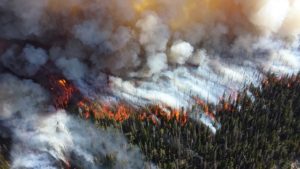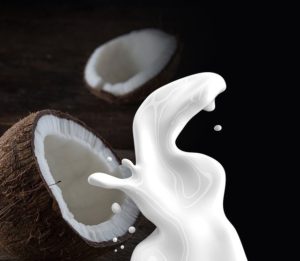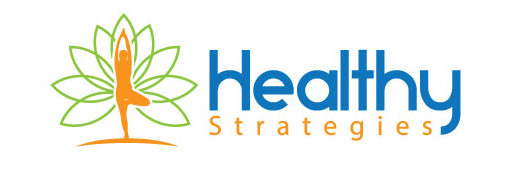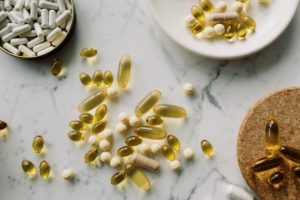How to Boost Your Immune System by Avoiding Toxins—Part 1
TAKEAWAYS FROM THIS ARTICLE
There are many chemicals that decrease our immunity and have other negative effects on our body. Avoiding them can boost your immune system. First stop: DIOXINS. If you have the time to read the entire article you will better understand why, but here are the most important things you’ll need to remember from this post.
DIOXINS EFFECTS
- impaired defense to infections
- reproductive and endocrine effects
- developmental toxicity
- carcinogens
- a form of acne called chloracne.
HOW ARE DIOXINS RELEASED
- in certain herbicides and pesticides production
- with municipal and medical waste incineration
- during chlorine bleaching of paper pulp
- with forest fires
- backyard burning
CONCLUSIONS
What is to consider after finding out this info:
- store-purchased dairy and meat from grass-fed cows may not be the best choice
- meat and dairy purchased directly from farms remote from any industrial source of contamination can be good options
- products from mostly grain fed cows are likely to contain less dioxins
- non-milk dairy is another an option if you enjoy the taste
- meat substitutes are loaded with many unhealthy and undesired additives
- chicken and pork are less likely to have this contaminant and is better to eat lean cuts and to remove as much fat as possible anyway.
- whenever possible, organic is a better option.
- non-bleached household paper products.
HOW CAN YOU BOOST YOUR IMMUNE SYSTEM
When the cold season starts, we are more and more interested how to boost our immune system. The most commonly asked question is: What can we take to get fewer infections during the fall and winter, and early spring actually.
Some individuals develop fewer and milder infections, while others more serious ones. The genes, age, and associated conditions play an important role in these. We know that being physically active, getting proper sleep, a healthy diet, and taking certain supplements can help boosting immunity. But there is more to it.
I will point out some things you’d need to remove from use in order to boost your immunity.
We clearly learned that smoking contributes to more severe infections, but how about other environmental factors, air, soil and water pollution? How about pesticides? What else can play a role?
Having had done my homework about what we put in and on our body, I wondered if the many of the synthetic chemicals we are regularly exposed to, may decrease our capacity to fight infections. I came across medical research articles that confirmed my suspicions while revealing more concerning facts. Removing many of these toxins from our routine can really boost the immunity.
Immunity cells of all kinds and the immune-response mediators (called cytokines), can be affected in many ways by different substances. Some researchers state that “developmental exposure to the environmental agents impacts adult life.” In other words, the exposure that we get while in the womb, affects us for many years to come, throughout adulthood.
There are a few classes of chemical substances we should all be aware of, if we want to boost our immune system. I decided to write a series of articles unraveling and separately discussing these toxins.
Covering all of them in one article may be a bit overwhelming. It’s not that important to memorize the complicated chemical names, but to remember where we can come across these, as well as some ways we can minimize our exposure.
Dioxins are by-products of many manufacturing processes. Because they’re so persistent in the environment, unfortunately we’re all exposed to them. The same persistence though, allowed for their effects on immunity to be better studied (after some industrial accidents and their presence as contaminants in Agent Orange—used in the Vietnam War).
The way these dioxins affect our immunity is by impairing the function of the immune cells called T lymphocytes, the production of cytokines, or by affecting the antibody response. Children with early life exposure to dioxins develop more episodes of sore throat, ear and respiratory infections all the way to adulthood. Minimizing the exposure can really boost our immune system.

HOW ARE DIOXINS RELEASED
- in certain herbicides and pesticides production
- with municipal and medical waste incineration
- during chlorine bleaching of paper pulp
- with forest fires
- backyard burning
You can figure out that they are released around these sites and get deposited on the ground and in the water. After an industrial accident in Italy, the dioxins released contaminated 6 square miles around, including the nearby town.
Apparently, the plants don’t take up any significant amounts from the soil or water, but the dioxins released—which are like tiny crystals, can deposit on grass.
You see where I’m driving at? Grass-fed cows! The cows grazing on fields in the proximity of such industrial operations can ingest dioxins that end up depositing in their fat tissues and the milk fat. And this is one way they get to us; beside ingesting them, we can also inhale them, and they absorb very well through intact skin.
DIOXINS EFFECTS
- impaired defense to infections
- reproductive and endocrine effects
- developmental toxicity
- carcinogens
- a form of acne called chloracne.
All these toxicities may give an even healthier meaning to the benefits of diets low in animal fats, a notion I’m sure you’ve heard! It’s not the same with chicken or pork. Animal feeds derived from grains contain much less of these contaminants because the seeds/kernels are covered by an uneatable, protective husk that is removed before any use.
Of course dioxins-contaminated feed can happen and when was detected (in 1999 and 2008), it had to do with improperly disposed PCBs waste. Polychlorinated byphenyls (PCBs)—chemically related with dioxins, will be the discussed in the next post.
The most potent dioxin—TCDD, in its pure lab-derived form, was used to poison the Ukrainian politician Viktor Yushchenko in 2004. If you do a Google search about chloracne, you’ll see images of what it looks like in milder cases or in the extreme one—for this politician.
Because they’re tiny crystals and they also have great affinity for dust particles, the wind can blow them miles away from the site where they were formed. You can imagine that during wildfires in different areas of the U.S., dioxins did get generated and traveled far enough.
 The well known brands for organic dairy products collect their milk from many farms all over the country. These farmers may not be aware that the serene pastures they use have the grass “powdered” with dioxins.
The well known brands for organic dairy products collect their milk from many farms all over the country. These farmers may not be aware that the serene pastures they use have the grass “powdered” with dioxins.
There are some undisputed benefits of milk from grass-fed cows, in terms of better omega-3, CLA, trace minerals, and higher vitamins D and E content; this is the reason why for a while we switched exclusively to this variety at home. Yet with a healthier product, my son’s acne became really aggravated and I didn’t understand why.
If one is prone to acne, milk can make it worse, with skim milk being worse than whole milk. The explanations are the hormones received by cows and the additives in skim milk—neither applies to him. He didn’t feel like giving up dairy altogether and I returned to the organic milk we previously used, from grain-fed cows.
Guess what? His acne lesions got better and this was really awkward, I couldn’t understand it at all. Until I came across the dioxins and the knowledge they can cause chloracne.
It is true that his worse acne lesions looked really different than the common acne and never returned when I gave up the grass fed milk! This feature makes me wonder if some other cases of terrible acne that don’t respond even to aggressive treatment, may be linked to this contaminant from the foods eaten or other sources.
CONCLUSIONS
With what I learned about dioxins:
- I don’t buy dairy from grass-fed cows, I just get organic dairy and meat, although especially with milk. I am aware that organic farmers feed their cows mostly grains, but they let them graze as well.

- For now, I don’t have the energy to research the farms closer to where I live, yet remote from any industrial source of contamination—that would be another choice.
- Non-milk dairy is another an option, although I’m not too crazy about them. I’m hoping maybe it’s an acquired taste.
- Meat substitutes I will not try because of the many additives I read being used.
- Chicken and pork are less likely to have this contaminant and is better to eat lean cuts and to remove as much fat as possible anyway. Whenever possible, organic is a better option.
- I switched to non-bleached household paper products.
When you read my book title, Keep Away from GRAS (Generally Recognized As Safe), GRAS is the acronym that regulating agencies use for the many chemicals they deem safe for us—which I have many doubts that they are.
Choosing this title was meant as a play on words. With the details about dioxins in dairy from the grass-fed cows, seems like a good idea for cattle to be kept away from grass (literally)— the dioxin contaminated one, of course.
The way I designed the book was trying to please everybody. For the readers who want to know details and understand why the chemicals may be detrimental, there are plenty of explanations and references. For those who don’t have the time or want to get straight to the point, there are summaries and lists that tell you what to avoid and how to do that.
You can download the ebook here.



